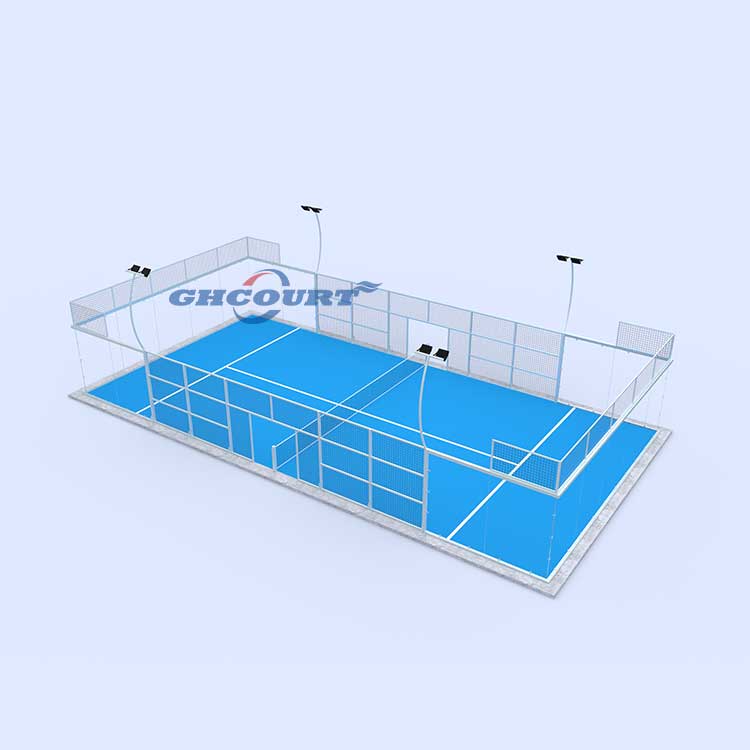
A Closer Look at the Materials Behind the Padel Court
Padel is a dynamic sport that combines elements of tennis and squash, and its unique court is a key part of the game. Unlike a traditional tennis court, a padel court is an enclosed structure with walls that are used in play. So, what exactly goes into building one? Let’s break down the main components and materials.
1. The Surface: Artificial Turf
The playing surface of a padel court is almost always made of artificial grass (turf). This material is chosen for several reasons:
Durability: It can withstand constant foot traffic and is resistant to weather.
Shock Absorption: The surface provides a comfortable playing experience, reducing stress on players’ joints.
Grip: The turf’s texture ensures players have good traction, preventing slips.
Consistent Ball Bounce: The uniform surface guarantees a predictable and consistent bounce, which is crucial for the game.
The turf is filled with a layer of silica sand, which helps to keep the fibers upright, improves ball bounce, and provides additional grip for the players.
2. The Walls: Tempered Glass and Wire Mesh
The enclosure is arguably the most defining feature of a padel court. It’s typically a combination of two materials:
Tempered Glass: The back walls and often parts of the side walls are made of tempered glass panels, usually 10mm or 12mm thick. This type of glass is incredibly strong and shatter-resistant, making it safe for players who might hit the ball (or themselves) into the wall. The transparent nature of the glass also allows for excellent visibility for spectators.
Wire Mesh (Metal Grids): The rest of the enclosure is constructed from a strong metal wire mesh. This mesh, often a specific type called electro-welded grid, is robust enough to handle high-speed ball impacts without deforming. The mesh is securely attached to the court’s structural frame.
3. The Structure: Steel
The entire court enclosure—including the glass and wire mesh—is supported by a strong structural frame, most commonly made of steel. The steel frame is a crucial component that:
Provides Stability: It holds the glass and mesh panels in place and gives the court its overall stability.
Ensures Durability: High-quality steel, often treated with an anti-corrosion finish like galvanization or powder coating, protects the structure from rust and weathering.
4. The Net
The net in a padel court is similar to a tennis net, though slightly smaller. It is 10 meters long and approximately 0.88 meters high in the center, rising to 0.92 meters at the sides. It is typically made of a durable, weather-resistant nylon or polypropylene material.
5. Lighting
For courts used in the evening, a lighting system is essential. Most modern padel courts use LED floodlights mounted on poles. These lights provide bright, uniform illumination across the court, ensuring visibility without creating glare.
In summary, a modern padel court is a sophisticated structure built with a combination of durable artificial turf, strong tempered glass, and a robust steel frame. Each material is chosen to create a safe, consistent, and exciting playing environment for this popular and fast-growing sport.
about
GHCOURT
We are a globally leading manufacturer of Padel Courts, dedicated to providing high-quality, professional-grade Padel court solutions for sports enthusiasts, clubs, and commercial venues. With years of industry experience and technological innovation, we specialize in designing, manufacturing, and installing Padel courts that meet international standards, catering to diverse needs ranging from professional tournaments to home entertainment.
